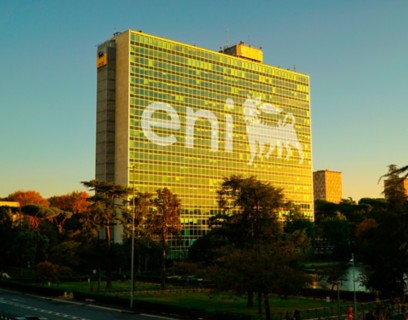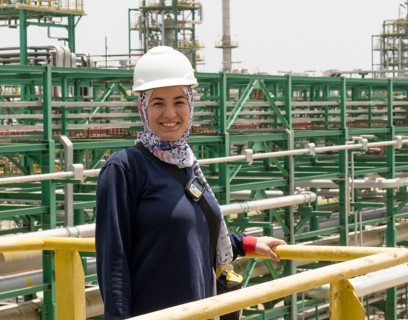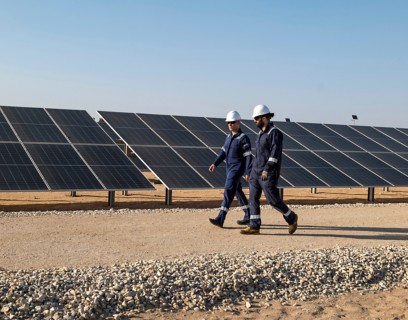Our actions to monitor GHG emissions
We strive to decarbonize processes and products by 2050 and consider the emissions generated throughout the entire life cycle.

GHG emissions reporting and verification
Eni reports its GHG emissions in line with leading international standards and industry best practices. 2024 was the first year of implementation of the Corporate Sustainability Reporting Directive (CSRD), which, with the aim of harmonising sustainability reporting among European companies, introduced a GHG reporting boundary based on a combination of financial and operational perspectives.In accordance with ESRS (European Sustainability Reporting Standards), Scope 1 and Scope 2 emissions are reported including fully consolidated subsidiaries and, proportionately, joint operation activities and mining operations managed by operating companies. Additionally, emissions from operated assets are reported at 100%. Scope 3 emissions cover those related to Eni’s value chain and are reported according to materiality criteria, classified under the GHG Protocol, and aligned with available sector-specific methodological standards. Beyond these metrics, Eni also reports a range of Entity‑Specific Indicators (specifically for Eni) used to track operational performance and progress towards Carbon Neutrality by 2050. For full details on reporting methodologies, materiality analysis of emission sources, and other GHG accounting aspects, refer to the dedicated section (see Metrics: reference methodologies).
Value Chain Methodology
Eni's value chain methodology refers to proprietary and distinctive GHG emission reporting. It was developed with the support of independent experts and is being progressively improved to reflect the latest developments in emission reporting standards. Our approach is inspired by lifecycle analysis (LCA), which considers the entire life cycle to assess the carbon footprint of a product or process. This methodology allows for an integrated view of Scope 1+2+3 GHG emissions linked to the entire life cycle of the energy products sold by Eni (from a Well-to-Wheel perspective) net of carbon offsets.
The volumes of energy products and emissions generated throughout the entire value chain are quantified from an equity perspective and on the basis of an extended perimeter, which includes both its own production and volumes purchased from third parties. Eni has adopted this approach to define its medium to long-term decarbonization targets, both in terms of absolute emissions (Net GHG Lifecycle emissions) and emission intensity (Net carbon intensity).


Net Zero indicators
In the view of the new CSRD reporting perimeter, Eni has continued on its GHG emissions reduction trajectory on an equity basis, in line with the commitments made in 2020. Eni's path to carbon neutrality in 2050 is made up of a series of targets that involve first of all achieving net zero emissions (Scope 1+2) from the Upstream business by 2030 and from Eni in its entirety by 2035, and then achieving Net Zero by 2050 from all GHG Scope 1+2+3 emissions associated with the entire value chain of energy products sold, both in absolute terms and in terms of intensity. Here are the key equity‑based performance indicators, net of carbon offsets (sourced from Natural Climate Solutions and from applied technological solutions).
Net GHG Lifecycle Emissions
The indicator refers to the absolute Scope 1+2+3 GHG emissions associated with the supply chain of energy products sold by Eni, including both those derived from Eni's own production and those purchased from third parties. In 2024, the indicator fell slightly (–0.8%) compared to 2023, primarily owing to the refining sector. Emissions are approximately 22% below the baseline value.
Net Carbon Intensity
The indicator is calculated as the ratio between Net GHG Lifecycle Emissions and the energy content of energy products sold by Eni. In 2024, the indicator declined slightly (c. –0.5%) thanks to a lower emissions intensity in the portfolio mix. Compared to the baseline, it is down by around 4%.
Upstream Net Carbon Footprint
The indicator considers Scope 1+2 GHG emissions from Upstream assets, whether operated by Eni or third parties. In 2024, this indicator decreased by around 25% versus 2023, thanks to operational optimisation efforts and carbon credit generation projects. Furthermore, the 2024 target of a 50% cut from 2018 was surpassed, with emissions down approximately 55%. This aligns with the pathway to Eni’s net zero Carbon Footprint goal by 2030.
Eni’s Net Carbon Footprint
The indicator refers to Scope 1+2 GHG emissions from assets operated by Eni or third parties. In 2024, it fell by around 10% compared to 2023, supported by operational optimisation and carbon-credit projects. Since 2018, the indicator has decreased by approximately 37%, aligning with the Eni Net Zero Carbon Footprint target by 2035.
Scope 1 and 2
Under the new CSRD scope, direct GHG Scope 1 emissions from Eni’s operated activities in 2024 stood at 31.1 MtCO₂eq, down by about 4% from 2023, mainly in the Exploration and Production sectors (due to asset sales in Nigeria and Congo and gas‑enhancement projects in the Congo), as well as refinery restructuring and maintenance.
Indirect GHG Scope 2 emissions showed a slight increase on a location-based1 basis, while falling in market based2 figures due to rising use of guarantees of origin. These emissions arise from energy purchases from this parties for operated assets and are marginal for Eni, as electricity generation is mainly sourced from its own installations.
- (1) approach based on the average electricity mix of the country from which electricity is purchased from third parties. The reference source for Scope 2 emission factors relating to electricity purchases is the Emission Factors database published periodically by the IEA, which provides country-specific emission factors.
- (2) approach based on specific data relating to electricity supply, taking into account the share of renewable electricity, the country’s residual mix, and contractual instruments, either standalone or bundled with supply contracts.
Methane emissions
The topic of methane emissions has assumed central importance in the international climate debate in view of its significant climate-changing effect and the recognition of its role in terms of opportunities to mitigate global warming in the short to medium term.
Upstream Methane Fugitive Emissions
Eni has set a target to reduce fugitive methane emissions by 80% (versus the 2014 baseline) by 2025. This target was achieved in 2019, thanks to annual LDAR (Leak Detection And Repair) campaigns across Eni‑operated assets.
The emission intensity of methane in the Upstream sector
Focusing primarily on the Upstream sector, Eni has committed to maintaining methane emission intensity below 0.2% by 2025, a threshold recognised as indicative of near‑zero methane operational performance, and has joined the OGCI’s Aiming For Zero initiative to eliminate methane emissions from its assets by 2030.
Gas flaring mitigation initiatives
Eni has ramped up efforts to identify and deploy gas‑flaring mitigation projects, with current examples in Congo, Libya and Egypt. In this context, Eni is making progress towards the target of zero routine flaring in operated assets by 2025. For co-operated assets, target achievement depends on the completion of ongoing projects in Libya, currently expected in 2026.
Energy efficiency
Energy efficiency measures implemented during the year resulted in actual primary energy savings of over 308 ktep/year from baseline consumption, mainly through Upstream projects (over 82%), equating to CO₂eq emissions reduction of approximately 778,000 tonnes. Including Scope 2 emissions (from purchased electricity and heat), net CO₂ savings from energy‑saving projects reached around 816,000 tonnes of CO₂eq. In 2024, Eni’s total energy consumption was 92.7 million MWh, down 3% from 2023 due to reduced fossil energy use, especially lower natural‑gas consumption following the sale of Nigerian Agip Oil Co Ltd. Renewable energy consumption stood at 587,259 MWh, up 62% compared to 2023, driven by higher purchases of electricity backed by guarantees of origin and increased biomass energy use.
All data on our sustainability performance
Net Zero: our path to decarbonization
We aim to achieve carbon neutrality by 2050 through a plan with progressive targets involving all sectors.
Eni for 2024. Check out our interactive feature
Read the stories, case studies and testimonials behind our contribution to a socially equitable energy transition in the Sustainability Report.

Carbon Offset Solutions
Initiatives to protect local areas and ecosystems and technological solutions to offset greenhouse gas emissions.


















